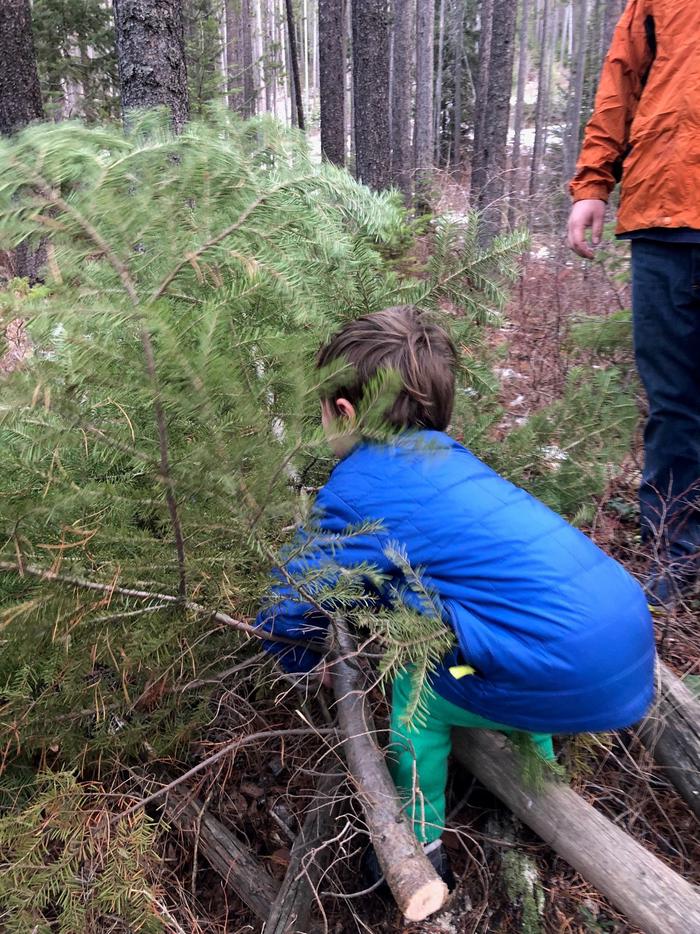Custer Gallatin National Forest Christmas Tree Permit
Custer Gallatin National Forest
This permit allows you to cut a Christmas Tree within the Custer Gallatin National Forests of Montana and South Dakota! Lifelong memories are built during these special times and we are happy to help with any information gathering you'll need to make this trip a safe and enjoyable one.
Please be sure to read and agree to all the tips and guidelines when selecting your tree.
For additional information, the following links will take you to the Custer Gallatin National Forest website:
Forest Products Passes & Permits
Follow all Motor Vehicle Use Maps for your area of the Forest.
Need to Know
Selecting Your Tree
Stump height: 6 inches maximum (lower the better)
Do not remove the top of the tree; cut down the entire tree
No cutting of 5 needle pines (i.e. 5 needles in one cluster)
Limber Pine and White Bark Pine trees are NOT permitted. If unsure, please check with your local ranger district about tree species identification and restrictions.
If snow is on the ground, remove it from around the stump so you can accurately measure the stump and tree height
Be Alert! There are many dead and dying trees that could fall at the slightest disturbance!
Where to Cut Your Tree
Your permit allows you to cut Christmas trees on the Custer Gallatin National Forest, located within Montana and portions of South Dakota.
This permit allows for gathering personal-use boughs, but no cutting from Hemlock or Cedars.
Permits are good Forest-wide, except at cabins, campgrounds, picnic areas, trailheads, wilderness or riparian areas, natural landmarks, timber sales and areas where trees have been planted for reforestation purposes.
Check with your local Ranger District for specific road access or seasonal closures.
Be sure you're on National Forest lands before cutting a tree!
Maximum Tree Height:
Ashland Ranger District (1-15 ft tree)
Beartooth Ranger District (1-12 ft tree)
Bozeman Ranger District (1-12 ft tree)
Gardiner Ranger District (1-12 ft tree)
Hebgen Lake Ranger District (1-12 ft tree)
Sioux Ranger District (1-15 ft tree)
Yellowstone Ranger District (1-12 ft tree)
Planning Your Trip
Helpful Cutting Tips
Carry your tree carefully out of the woods. Dragging the tree will rub off needles and bark.
If the tree is too big to transport inside of your vehicle, wrap it in canvas to prevent wind damage.
Once home, cut the bottom of the trunk off and place the freshly cut trunk in a bucket of water. Replenish water.
If storing your tree outside for a few days before putting it in the house, keep it in an area protected from the wind.
Tools you might want to consider bringing with you include a measuring tape to ensure you select a tree that fits in your home; handsaw to cut your tree; gloves to protect your hands; boots to protect your feet; a tarp to sit on and/or to move your tree once it's cut; and rope or straps to secure your tree to your vehicle.
Choose a tree from a dense forested area, which will give the remaining trees more space to grow.
Lop and scatter all unused portions of the tree.
How to Plan Your Trip
Before you leave home, be sure to measure the space where you plan to place the tree in your home (height and width), and measure the space in your vehicle where you will be transporting the tree.
Cell service may be spotty or unavailable. Be sure someone knows where you are and when to expect you back.
Check the latest weather conditions, forest warnings and road closures before you leave on your trip.
Bring a map with you. Don’t rely on GPS because it may not be up-to-date with forest service roads.
Dress warmly and take extra dry clothes. Expect winter weather, including cold temperatures, snow and winds.
Roads may not be plowed. Carry tire chains, shovel(s) and a tow chain. Be sure your vehicle has a full tank of gas. Park in areas so that traffic can get by safely, and do not block gates. Bring a spare key and give it to someone else in your party. Don’t get locked out of your car!
Bring plenty of food and water with you as well as an overnight survival kit in case you become stranded. Start your day early. Be sure to find your tree and leave the woods before dark.



